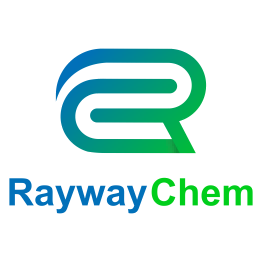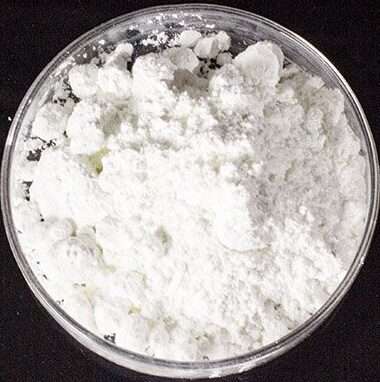Chemical Name is zinc dimethyldithiocarbamate, accelerator ZDMC, zinc formate (Ziram).
1. Performance:
White or light yellow powder, melting point 250°C, relative density 1.66. A few flat insoluble in water and gasoline, but has good wettability in water, soluble in carbon disulfide, chloroform and dilute alkali, slightly soluble in ethanol, acetone, benzene, dichloromethane and carbon tetrachloride, Toxic.
2. Production method
Add carbon disulfide to the aqueous solution of sodium hydroxide and dimethylamine, and condense under the condition of lower than 30℃ to produce sodium dimethyl sulfated carbamate. And then with zinc chloride complex decomposition reaction, after filtration, drying, crushing to get the finished product.
3.Production Process
In the reaction pot, 106.6kg of sodium hydroxide into 15% aqueous solution, add 210kg of carbon disulfide and 29g40% dimethylamine, stirring slightly heated, maintained at 40-50 ℃, condensation reaction, the reaction of more than 1h, to the body H value of 9 ~ 10, to get a light yellowish-green or amber solution, that is, sodium dimethyldithiocarbamate. N in sodium dimethyldithiocarbamate add zinc chloride, stirring, control the temperature below 30 ℃ to carry out the complex decomposition reaction. The reaction produces a precipitate, the reaction product is filtered, dried, crushed and screened to obtain the accelerator PZ.Note: Zinc sulfate can also be used in the complex decomposition reaction.
4.Specification:
Molecular Formula: C6H12N2S4Zn
Molecular Weight: 305.4
CAS NO: 137-30-4
Specification:
| Item | Powder |
| Appearance | White powder(granule) |
| Initial M.P. ℃ ≥ | 240.0 |
| Loss on drying % ≤ | 0.50 |
| Zinc content % | 20.0-23.0 |
| Residues on 150μm sieve % ≤ | 0.10 |
| Item | Powder |
5.Useage
It is used as a general accelerator for natural rubber, synthetic rubber, and latex, serving as an accelerator for sulfur vulcanization with a low vulcanization temperature (approximately 100°C). Its activity is similar to TMTD, but it exhibits stronger activity at low temperatures and a tendency to scorch during compounding. This accelerator is particularly suitable for butyl rubber, which requires minimal compression set, and acrylonitrile rubber, which requires good aging resistance. It is also suitable for EPDM rubber.
When used alone in latex, it has a slow vulcanization rate and is typically used in combination with other accelerators, particularly thiazole-type accelerators, to improve tensile strength and resilience. It also has a blooming effect on thiazole and sulfonyl amide accelerators. When used in conjunction with accelerator DM, an increase in DM dosage enhances scorch resistance. Zinc oxide is added as an activator, and a small amount of stearic acid is typically required. Stearic acid in larger quantities may delay vulcanization.
This accelerator is suitable for light-colored and bright-colored products and is used not only in latex products but also in self-vulcanizing rubber compounds, rubber tapes, cold vulcanized products, and rubber products for non-food applications. The typical dosage in latex materials ranges from 0.3% to 1.0%.
Additionally, this product is used for the prevention and control of fungal diseases in fruits and vegetables.
Accelerator PZ (ZDMC) is a super accelerator for natural rubber, synthetic rubber, and a general accelerator for latex. It is particularly suitable for low compression set requirements in butyl rubber and good aging performance in acrylonitrile rubber, as well as EPDM rubber.
It has a very low vulcanization temperature (approximately 100°C), and its activity is similar to TMTD, but it exhibits stronger activity at low temperatures and a tendency to scorch during compounding. It activates thiazole and sulfonyl amide accelerators and can serve as a secondary accelerator. When used in combination with accelerator DM, an increase in DM dosage enhances scorch resistance. Zinc oxide is added as an activator, and a small amount of stearic acid is typically required. When used alone in latex, it has a slow vulcanization rate and is usually combined with other accelerators. When used with thiazole accelerators, it improves tensile strength and resilience. It disperses well in rubber and is suitable for light-colored products.
It is primarily used in latex products but can also be used in self-vulcanizing rubber compounds, rubber tapes, cold vulcanized products, and non-food rubber products. In the United States, ZDMC has received FDA approval and exhibits significant effects in EPDM rubber, butyl rubber, and other products.
6.Safety and storage and transportation
In the production of dimethylamine, carbon disulfide, etc., the product is toxic, the production process should pay attention to prevent leakage of the operator should wear good protective gear, strengthen ventilation in the workshop. The products are packed in woven bags lined with plastic bags and stored and transported according to the regulations on toxic chemicals.



